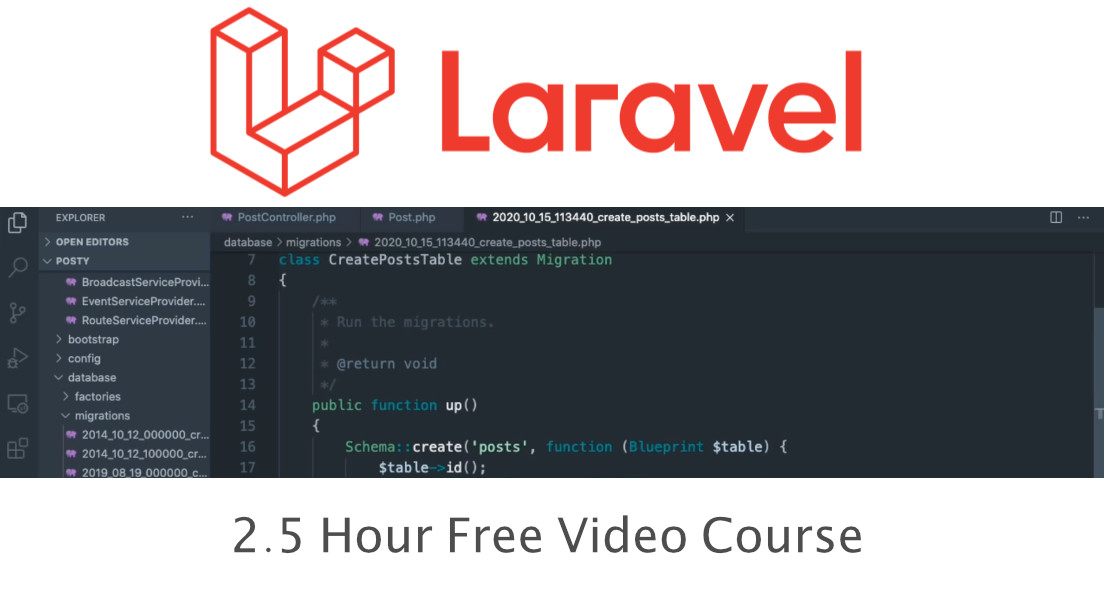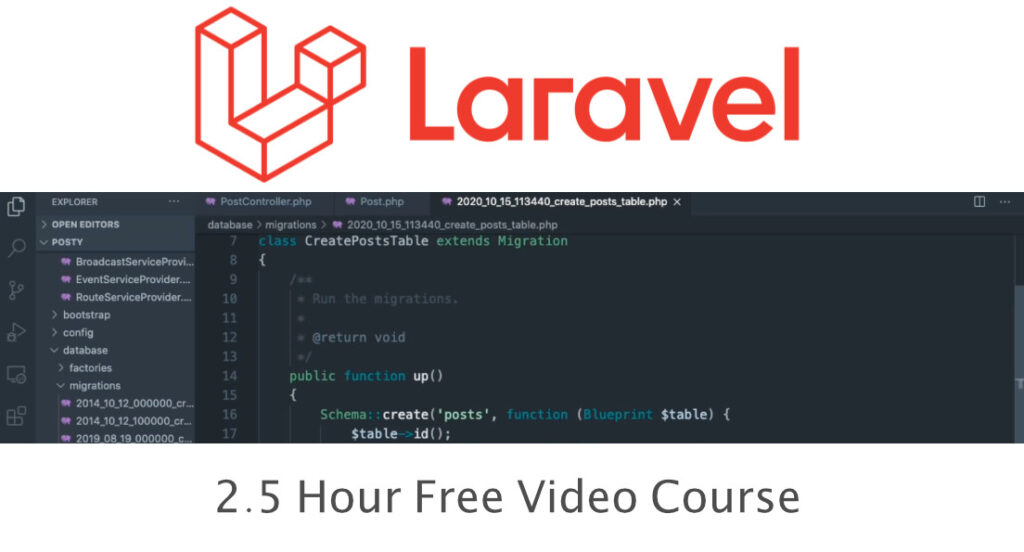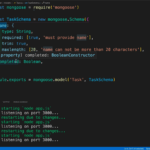My Journey to Mastering Web Development: How a Laravel Course Changed Everything
I remember a time, not so long ago, when the idea of building my own web application felt like trying to untangle a giant ball of yarn in the dark. I’d dabbled in HTML and CSS, even messed around with a bit of raw PHP, but putting it all together into something functional, secure, and well-organized? That felt like a task for seasoned wizards, not for someone like me.
I was stuck. I had ideas, small projects I wanted to bring to life, but the sheer complexity of connecting databases, handling user logins, and making sure everything ran smoothly was overwhelming. Every tutorial I found seemed to assume I already knew half the battle. Then, a friend, a developer who always seemed to effortlessly conjure up amazing websites, mentioned something that would eventually change my entire trajectory: "You should look into Laravel. And seriously, find a good Laravel course."
Why Laravel Clicked for Me: A Beginner’s Revelation
Before I even considered a Laravel course, I did a little digging. What was this "Laravel" thing anyway? Turns out, it’s a PHP framework. Now, "framework" itself sounded intimidating, but as I read more, I started seeing words like "elegant," "simple," "developer-friendly." People talked about how it made common web development tasks incredibly easy and fun.
I learned that Laravel handles a lot of the boring, repetitive stuff for you. Think about user authentication (login/logout) – something every web app needs. Laravel has it built right in. Database interactions? It makes talking to your database feel almost like talking to a friend. For someone who was struggling to even start a project, this sounded like magic. It promised to take away the dread and replace it with structure and speed. I wanted in. I needed to learn Laravel.
Choosing the Right Laravel Course: My Honest Search
The next step was crucial: finding the right Laravel course. A quick search showed a mountain of options – free tutorials, paid courses, bootcamps, YouTube series. It was another overwhelming moment. Here’s how I approached it, and what I’d recommend if you’re in the same boat looking for a Laravel for beginners guide:
- Read Reviews, Seriously: Don’t just pick the first course that pops up. I spent hours reading reviews. I looked for courses where people specifically mentioned clear explanations, practical examples, and an instructor who could break down complex topics.
- Look at the Curriculum: What exactly would I learn? I wanted a course that covered the fundamentals: setting up Laravel, routing, controllers, views, databases (Eloquent ORM), user authentication, and maybe even a small project to build. A good Laravel tutorial should lay out its content clearly.
- Instructor’s Style: Some instructors are brilliant but too fast for beginners. Others are slow but incredibly thorough. I watched preview videos to get a feel for their teaching style. I needed someone patient, someone who explained why we were doing something, not just how.
- Community Support: Does the course have a forum or a community where I could ask questions if I got stuck? This was a huge bonus for me. Learning new things means getting stuck, and having a place to ask for help is invaluable.
- Price vs. Value: While I was on a budget, I also understood that a really good course was an investment. Sometimes, paying a little more for a comprehensive, well-structured course saves you hours of frustration down the line.
After much deliberation, I finally picked one. It promised project-based learning, starting from the very basics, and had glowing reviews about its beginner-friendliness. I was nervous, but excited. My Laravel learning journey was about to begin.
The Learning Curve and the ‘Aha!’ Moments
The first few days of my Laravel course were a blur of new terms: Composer, Artisan, MVC, Eloquent. It felt like learning a new language. Setting up my development environment was a minor hurdle, but the course walked me through it step-by-step.
Here’s what truly started to click for me, thanks to the structured approach of the course:
-
MVC Architecture (Model-View-Controller): This was a big one. My raw PHP projects were a mess of code all over the place. Laravel, through the course, taught me how to separate concerns:
- Models: For talking to the database. "Oh, so this is where my user data lives and how I get it!"
- Views: For what users see in their browser (HTML, CSS). "This is where my pretty designs go!"
- Controllers: For handling requests and telling models and views what to do. "This is the brain that connects everything!"
It was like finally understanding how to organize a chaotic kitchen into a perfectly functional one.
-
Routing: Before, I’d create a separate PHP file for every page. Laravel’s routing system, as explained in the Laravel course, showed me how to define clean, user-friendly URLs that pointed to specific controller actions. No more
/about_us.php– now it was just/about. So much cleaner! -
Eloquent ORM: This was probably my biggest "aha!" moment. Interacting with databases used to involve writing complex SQL queries. Eloquent made it so simple. Instead of
SELECT * FROM users WHERE id = 1, I could just writeUser::find(1). It felt like talking to my database in plain English. The course had fantastic examples that made database management feel less like rocket science and more like a conversation. -
Blade Templating: Building dynamic web pages became a joy with Blade. Instead of messy PHP tags mixed with HTML, Blade offered a clean, readable syntax for displaying data, looping through lists, and even creating reusable components. It made designing my pages so much more efficient.
-
Authentication & Authorization: Remember how I said Laravel makes logins easy? The course demonstrated how to implement a full user registration and login system with just a few commands. This alone saved me weeks of trying to figure out security and session management on my own. It felt incredibly powerful to have such a crucial feature handled so elegantly.
Each module of the Laravel course built upon the last, slowly piecing together the puzzle. The instructor’s clear explanations, coupled with practical exercises and mini-projects, made the learning stick. I was actually building things – a small blog, a simple task manager – and seeing my code come to life was incredibly motivating.
The Transformation: From Novice to Builder
Finishing that Laravel course felt like earning a superpower. Suddenly, the world of web development didn’t seem so intimidating. I wasn’t just copying code anymore; I understood why I was writing it. I could troubleshoot errors, think through application logic, and envision how to build more complex features.
I went from someone who just wanted to "make a website" to someone who could confidently say, "I can build a web application." I started tackling personal projects that once felt impossible. I even started contributing to open-source projects, a step I never imagined taking.
The skills I gained from that Laravel tutorial weren’t just theoretical; they were immediately applicable. I understood how to structure a professional web application, how to secure it, and how to make it efficient. This newfound confidence and skill set even opened doors to new career opportunities, making me a much more attractive candidate in the tech job market.
My Advice to Fellow Beginners: Embrace the Laravel Journey
If you’re reading this and feeling that same overwhelm I once did, here’s my heartfelt advice:
- Start with a Good Laravel Course: Seriously, don’t try to piece it all together from random articles. A well-structured Laravel course provides a clear path, builds foundational knowledge systematically, and saves you immense frustration. Look for one that emphasizes hands-on projects.
- Don’t Be Afraid to Get Stuck: It’s part of the learning process. When you hit a wall, consult the course materials, search online (Stack Overflow is your friend!), or ask for help in your course’s community forum.
- Practice, Practice, Practice: The concepts will only truly sink in when you apply them. Build your own small projects, even if they’re just variations of what you learned in the course. This is how you really learn Laravel.
- Embrace the Laravel Community: Laravel has an amazing, supportive community. Once you’re past the very basics, engaging with other developers can accelerate your learning and provide invaluable insights.
- Be Patient with Yourself: Learning web development, especially a powerful framework like Laravel, takes time. Celebrate small victories and don’t get discouraged by setbacks.
Conclusion: Your Path to Web Development Awaits
Taking that first Laravel course was one of the best decisions I’ve made on my journey into web development. It transformed a daunting, chaotic field into an exciting, accessible landscape. It gave me the tools, the knowledge, and most importantly, the confidence to build the applications I dreamed of.
If you’re on the fence about diving into web development, or if you’re struggling with raw PHP and looking for a more elegant solution, I cannot recommend exploring a quality Laravel course enough. It’s more than just learning a framework; it’s about unlocking your potential to create, innovate, and build the future of the web. Your journey, much like mine, could start with that very first click on a Laravel tutorial. Go for it!



